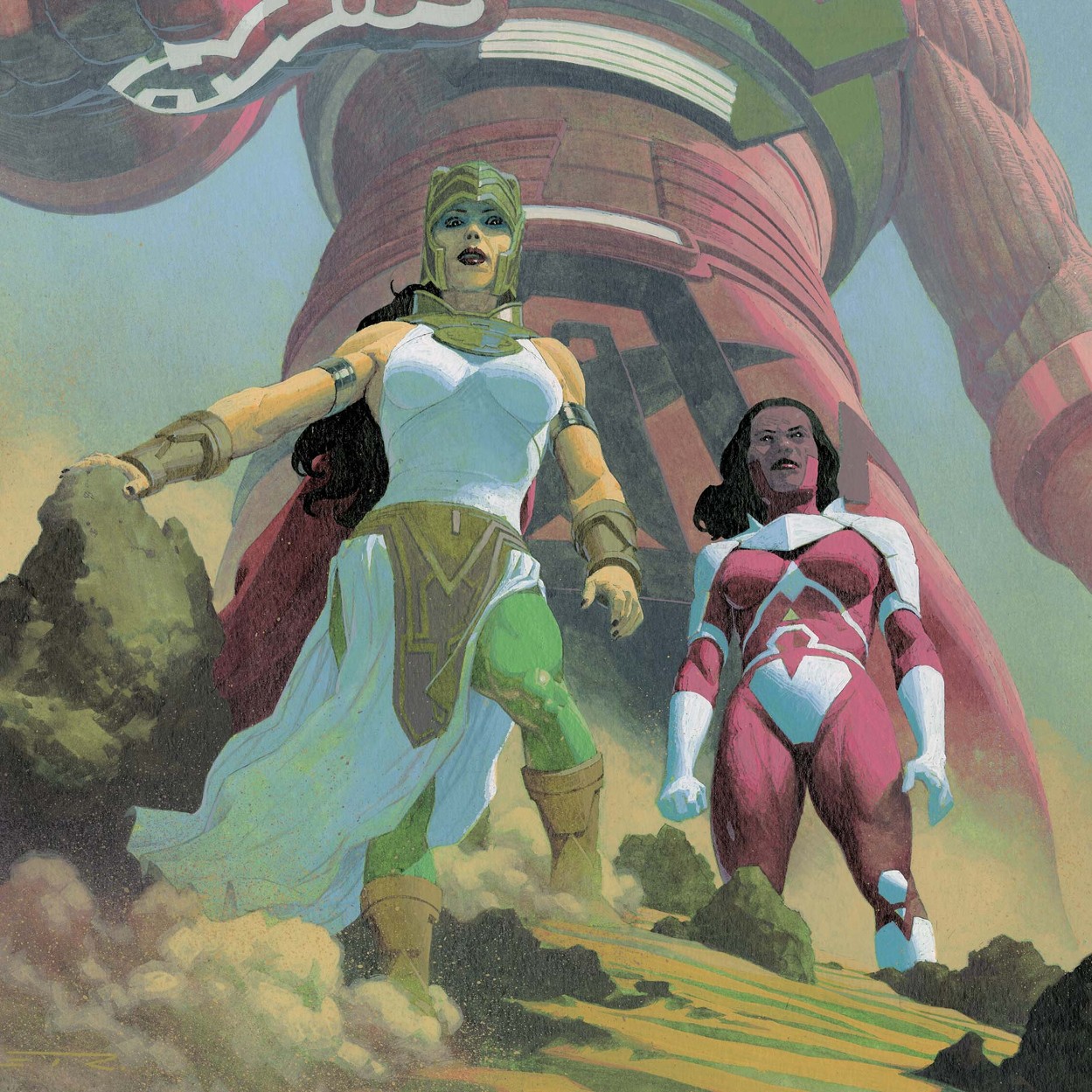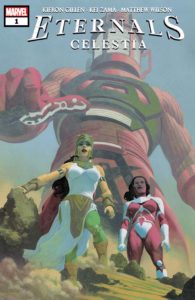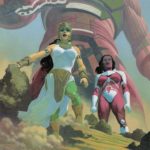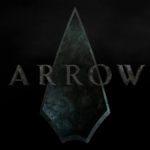
 In this week’s Eternals: Celestia #1 one-shot, Kieron Gillen’s cosmic epic asks a timely, complicated question: what happens when your god is dead? And furthermore, have the Avengers always been the jerk jocks of the Marvel Universe? (I can’t speak to the first one, but the second part is emphatically yes.)
In this week’s Eternals: Celestia #1 one-shot, Kieron Gillen’s cosmic epic asks a timely, complicated question: what happens when your god is dead? And furthermore, have the Avengers always been the jerk jocks of the Marvel Universe? (I can’t speak to the first one, but the second part is emphatically yes.)
Following last month’s Thanos Rises story, Eternals: Celestia pairs Ajak and Makkari—both recently rebooted by The Machine into new bodies—for a pilgrimage to the remains of the first Celestial that came to Earth, which also happens to be the Avengers’ current base of operations. In a classic crisis of faith over their creators, the two are of opposing positions. While Makkari has accepted that the Celestials are gone for good and that they should forge a new religion for themselves because of it, Ajak remains a staunch believer of their gods even if they are no longer around to return her devotion. This dynamic was actually the main conflict presented in Thanos Rising: one Eternal suggesting a new way of life for their society (biological procreation) while the other is firm in their belief to keep the old way (no procreation) in place. It’s an interesting reflection of the same basic argument, but through a different ideological lens.
This issue also serves to give some spotlight to Ajak and Makkari, neither of whom have appeared in Gillen’s Eternals title yet (they are also notably two characters who’ve been reimagined to more closely resemble the actors portraying them in next month’s Eternals film). Besides the obvious visual changes, Makkari in particular is now shown to communicate through sign language, which she will also be doing in the movie as portrayed by the deaf actress Lauren Ridloff. The way Makkari speaks in this issue is more or less the same as any character’s dialogue would be presented, but with a squiggly line connecting her face to dialogue boxes to convey non-verbal speech. It’s a simple device, but I think it’s effective and does enough to let the audience know she communicates a little differently than her hearing counterparts.
Eternals: Celestia also features an appearance from the prehistoric Avengers, who are shown to have faced off against Ajak centuries prior. I do appreciate that their involvement in the plot here isn’t done for the sake of a crossover but rather to contrast Ajak’s opinion of them versus now (obviously, she’s not very happy that they’re using one of her gods as a housing facility). In a fictional universe where these sorts of moments can feel gratuitous, sometimes the It’s-All-Connectedness of it actually bears some relative narrative fruit
Overall, Eternals: Celestia is good additional material for Gillen’s run if you’ve been following along. His script can be a little hard to follow if you’re completely new with this complicated side of the Marvel Universe, but I think it gives you all the context and information you need as it goes along. Kei Zama’s art is also very impressive here and very different from what Esad Ribić is doing in the main title. While Ribić excels at grandiose, painterly imagery, Zama’s style allows more for smaller-scale character work that helps sell the gamut of emotions shared between Ajak and Makkari here.




